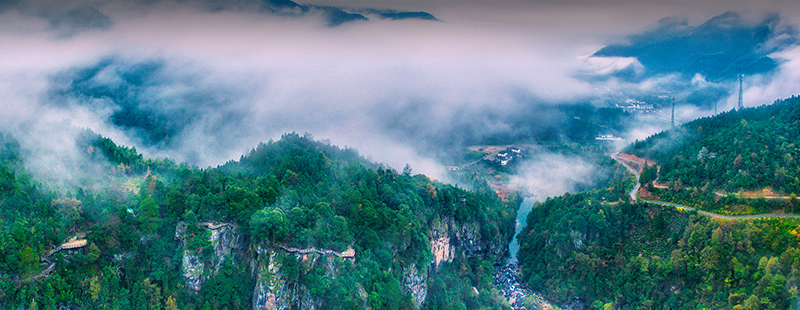【3-Day tour】Shitai Gu Niu Descent, Penglai Xiandong, Strange Pool Rafting, Xianfushan Dashan Village
Release Date:2024-06-25 Source: Number of views:167
Day One
Go to Shitai, the most beautiful mountainous countryside with original ecology in China and a natural oxygen bar in the morning.
Visit [Penglai Fairy Cave] in the afternoon. (Touring time is about 2 hours). It is a national 4A-level scenic spot.
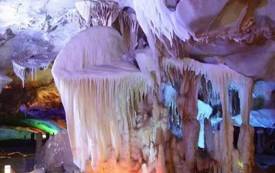
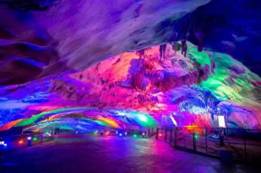
The Penglai Fairy Cave Scenic Area is located in Shitai County, Chizhou City, China. It is the hometown of Du Xunhe, a famous poet in the late Tang Dynasty. The Penglai Fairy Cave Scenic Area is a karst cave landscape rich in geological interest. The entire cave body presents a multi-level, multi-stage, and multi-accumulation form. With a total length of more than 3,000 meters and a total area of more than 20,000 square meters, it has an interchange structure. It is divided into four levels: the upper cave, middle cave, lower cave, and underground river. It has unique shapes, winding and looping, magnificent momentum, and beautiful sceneries everywhere. There are more than 10 scenic spots such as the welcome hall, the exploration sea promenade, the East China Sea Dragon Palace, the Tongming Palace, the Mysterious Immortal Palace, the Yuchan Palace, the Milky Way promenade, the Jade Pool, the South China Sea, the Chaoyin Hall, and the farewell hall, which are all wonderful. The lower cave has huge rocks of various shapes and a continuous underground river. The middle cave is covered with exquisite stalactite groups, which are lifelike and vivid. The upper cave is grand and beautiful, winding and deep, with strange landscapes. Among them, the extremely exquisite "landscape mural", the flawless "gauze curtain", the crystal clear "celestial silk", and the majestic "Thousand Buddha Mountain" form the "four wonders of Penglai". It can be called a natural geological museum and is known as the top of the karst cave group in Shitai. Every year, it attracts thousands of Chinese and foreign tourists. There is a saying that "after returning from Huangshan Mountain, one does not look at other mountains; after returning from Penglai, one does not look at other caves." After coming out of the cave, you can freely check in at [Tang Style Poetry Corridor - Wind Chime Corridor]. The sound of the wind chimes is clear and melodious. Here, you can empty your mind and listen to the sound of the wind chimes quietly. You can also make a wish and attach it to the wind chime.
The next day
Go to [Xianyu Mountain Scenic Area], China's first selenium-rich village, a 4A-level scenic area. Visit the Dashan Selenium-rich Village Scenic Area of Xianyu Mountain (touring time is about 3 hours). After transferring to a small transportation vehicle, visit Xianyu Renjia, selenium-rich tea garden, Longya Corridor, character "八" stroke, natural bathing place, General Rock, Wukong Pays Homage to General, General's Sword, selenium-rich divine spring, thousand-year crape myrtle, mysterious valley, thousand-layer cliff, A Curtain of Dreams, tortoise playing in water, and forest bathing place. Feel the beautiful scenery of nature and explore the magical mystery of selenium.
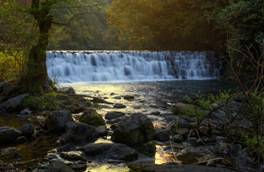

After the Chinese meal, visit the ancient emblem road of the Millennium Beech Genling Ridge, which is about 7.5 kilometers long, all cut with bluestone slabs. The earliest records can be traced back to the Tang Dynasty and four years ago, about 2,000 years ago, and it is known as the "Huirao Pass". The "Qing History Draft" calls it the "Huirao Pass". Because of its dangerous terrain, it has been a battleground for military experts since ancient times. There have been many large-scale wars here. The most talked about is the war between Zeng Guofan and the Taiping Army during the Taiping Heavenly Kingdom. The famous allusion of "repeated defeats and repeated battles" in the "Zeng Guofan Family Letter" happened here. After that, visit the popular rafting attraction - [Weird Pool Rafting] (tour time is about 2 hours)
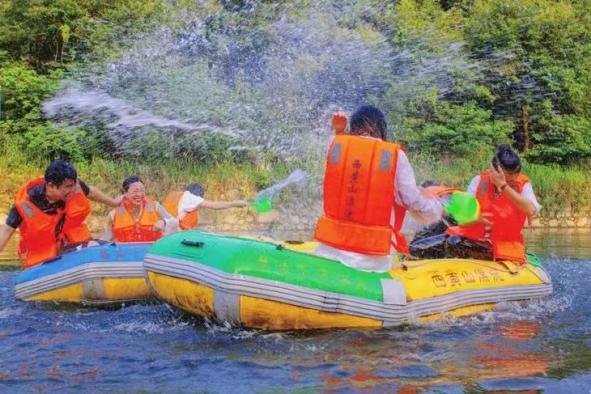

The whole process of the strange pool rafting is about 4 kilometers, with two surfing slides, five rapids and rapids, the water revolves around the mountain, and the mountains run through the water. Sometimes the level is like a mirror, you can stop the paddles, float with the waves, rest your mind, sometimes the waves are rough, stand up the paddles, chop the waves, and move your body. You can not only enjoy the leisure in the stillness, but also feel the thrill in the movement, pleasure your body and mind, and achieve a balance of movement and stillness. Looking far away, you can see a wisp of turquoise autumn water circling the mountain. Looking close to the river bank, the ancient forest of maple poplar in various shapes is like a dragon dormant by the water, lush with green. Along the way, passing through the Jiangziya Diaotai and the "Sandai Stone" named after the county, all these constitute a huge landscape painting scroll of "One water runs through the mountains, and the scenery on both
The third day
In the morning, visit [Shitai Guniujiang Scenic Area] (touring time is about 3 hours). The Guniujiang Scenic Area in Shitai County, Anhui Province is a national comprehensive nature reserve mainly based on forest ecosystem approved by the State Council in 1988. It is called the "green natural museum" by ecologists. In 2010, it was awarded a national 4A-level scenic area. In 2019, it was selected as an "Anhui summer resort destination". In 2021, it was selected as the first batch of forest health care bases in Anhui Province.
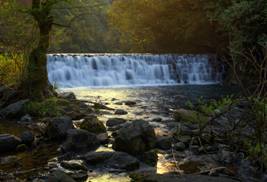
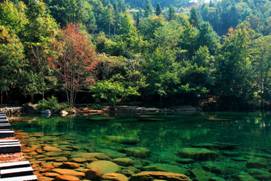
Guniujiang is the main body of the Huangshan Mountains extending westward. In ancient times, it was called "West Huangshan". Its main peak is 1,727.6 meters above sea level and is the third highest peak in southern Anhui Province. It is named Guniujiang because its mountain shape is very similar to a bull falling from the sky. Guniujiang has a total area of 6,700 hectares. It has an ancient stratum, superior climate, high mountains and dense forests, and is rarely visited by people. It preserves a relatively complete natural forest vegetation and is one of the important typical areas of the evergreen broad-leaved forest belt in the subtropics of eastern China. Here, tourism resources are extremely rich, there are many kinds of living things, the floristic elements are complex, and the ecological relationship is coordinated. At the same time, there are dangerous peaks, deep valleys, strange pine trees, grotesque rocks, and clouds and waterfalls in the area. The natural landscape is very magnificent.……
The [Yan Family Ancient Village], the descendant of the famous hermit Yan Ziling in the Eastern Han Dynasty. Here, ancient trees tower into the sky, the sound of pine waves is continuous, and the streams flow murmuringly. The dwellings and ancestral halls in Huizhou architectural style are hidden among them, presenting a scene of "cloudy trees merge by the village, and people live in a painting." This natural pure land, within the simple folk customs, is permeated with the indifference and purity that urbanites are desperately searching for. There are well-preserved ancient residential buildings, ancient mills, ancient ancestral halls, Candle Peak, Lover's Valley, Four-tiered Waterfall, etc. in the village. Later, through the items on display in the [Shitai Red Culture Exhibition Hall] combined with picture and text introductions, vividly reproduce that eventful and smoky era, understand that exciting red history, and truly step into the well-known "hero village." Here, the red slogan wall left by Fang Zhimin who transferred to Guniujiang during the northern expedition against Japanese aggression is still preserved. Hiking in [Longmen Grand Canyon], there are crocodiles in the river performing acrobatics. The "Longmen Pool" with mythical colors has clear and jade-like pool water. The canyon is deep and secluded. The ecological corridor is full of wild charm, with strange rocks everywhere and ancient trees like covers. There are Baizhang Rock, Rolling Stone Beach, Qixian Cave, Hidden Moon Pool, Longmen Flying Crossing, Bell and Drum Stone, Jasper Pool, and Small Great Wall in the south. It is truly a "silent poem and three-dimensional painting" created by nature.
After the journey ends, take a vehicle to return to the warm home and end the pleasant trip!
Day One
Go to Shitai, the most beautiful mountainous countryside with original ecology in China and a natural oxygen bar in the morning.
Visit [Penglai Fairy Cave] in the afternoon. (Touring time is about 2 hours). It is a national 4A-level scenic spot.


The Penglai Fairy Cave Scenic Area is located in Shitai County, Chizhou City, China. It is the hometown of Du Xunhe, a famous poet in the late Tang Dynasty. The Penglai Fairy Cave Scenic Area is a karst cave landscape rich in geological interest. The entire cave body presents a multi-level, multi-stage, and multi-accumulation form. With a total length of more than 3,000 meters and a total area of more than 20,000 square meters, it has an interchange structure. It is divided into four levels: the upper cave, middle cave, lower cave, and underground river. It has unique shapes, winding and looping, magnificent momentum, and beautiful sceneries everywhere. There are more than 10 scenic spots such as the welcome hall, the exploration sea promenade, the East China Sea Dragon Palace, the Tongming Palace, the Mysterious Immortal Palace, the Yuchan Palace, the Milky Way promenade, the Jade Pool, the South China Sea, the Chaoyin Hall, and the farewell hall, which are all wonderful. The lower cave has huge rocks of various shapes and a continuous underground river. The middle cave is covered with exquisite stalactite groups, which are lifelike and vivid. The upper cave is grand and beautiful, winding and deep, with strange landscapes. Among them, the extremely exquisite "landscape mural", the flawless "gauze curtain", the crystal clear "celestial silk", and the majestic "Thousand Buddha Mountain" form the "four wonders of Penglai". It can be called a natural geological museum and is known as the top of the karst cave group in Shitai. Every year, it attracts thousands of Chinese and foreign tourists. There is a saying that "after returning from Huangshan Mountain, one does not look at other mountains; after returning from Penglai, one does not look at other caves." After coming out of the cave, you can freely check in at [Tang Style Poetry Corridor - Wind Chime Corridor]. The sound of the wind chimes is clear and melodious. Here, you can empty your mind and listen to the sound of the wind chimes quietly. You can also make a wish and attach it to the wind chime.
The next day
Go to [Xianyu Mountain Scenic Area], China's first selenium-rich village, a 4A-level scenic area. Visit the Dashan Selenium-rich Village Scenic Area of Xianyu Mountain (touring time is about 3 hours). After transferring to a small transportation vehicle, visit Xianyu Renjia, selenium-rich tea garden, Longya Corridor, character "八" stroke, natural bathing place, General Rock, Wukong Pays Homage to General, General's Sword, selenium-rich divine spring, thousand-year crape myrtle, mysterious valley, thousand-layer cliff, A Curtain of Dreams, tortoise playing in water, and forest bathing place. Feel the beautiful scenery of nature and explore the magical mystery of selenium.


After the Chinese meal, visit the ancient emblem road of the Millennium Beech Genling Ridge, which is about 7.5 kilometers long, all cut with bluestone slabs. The earliest records can be traced back to the Tang Dynasty and four years ago, about 2,000 years ago, and it is known as the "Huirao Pass". The "Qing History Draft" calls it the "Huirao Pass". Because of its dangerous terrain, it has been a battleground for military experts since ancient times. There have been many large-scale wars here. The most talked about is the war between Zeng Guofan and the Taiping Army during the Taiping Heavenly Kingdom. The famous allusion of "repeated defeats and repeated battles" in the "Zeng Guofan Family Letter" happened here. After that, visit the popular rafting attraction - [Weird Pool Rafting] (tour time is about 2 hours)


The whole process of the strange pool rafting is about 4 kilometers, with two surfing slides, five rapids and rapids, the water revolves around the mountain, and the mountains run through the water. Sometimes the level is like a mirror, you can stop the paddles, float with the waves, rest your mind, sometimes the waves are rough, stand up the paddles, chop the waves, and move your body. You can not only enjoy the leisure in the stillness, but also feel the thrill in the movement, pleasure your body and mind, and achieve a balance of movement and stillness. Looking far away, you can see a wisp of turquoise autumn water circling the mountain. Looking close to the river bank, the ancient forest of maple poplar in various shapes is like a dragon dormant by the water, lush with green. Along the way, passing through the Jiangziya Diaotai and the "Sandai Stone" named after the county, all these constitute a huge landscape painting scroll of "One water runs through the mountains, and the scenery on both
The third day
In the morning, visit [Shitai Guniujiang Scenic Area] (touring time is about 3 hours). The Guniujiang Scenic Area in Shitai County, Anhui Province is a national comprehensive nature reserve mainly based on forest ecosystem approved by the State Council in 1988. It is called the "green natural museum" by ecologists. In 2010, it was awarded a national 4A-level scenic area. In 2019, it was selected as an "Anhui summer resort destination". In 2021, it was selected as the first batch of forest health care bases in Anhui Province.


Guniujiang is the main body of the Huangshan Mountains extending westward. In ancient times, it was called "West Huangshan". Its main peak is 1,727.6 meters above sea level and is the third highest peak in southern Anhui Province. It is named Guniujiang because its mountain shape is very similar to a bull falling from the sky. Guniujiang has a total area of 6,700 hectares. It has an ancient stratum, superior climate, high mountains and dense forests, and is rarely visited by people. It preserves a relatively complete natural forest vegetation and is one of the important typical areas of the evergreen broad-leaved forest belt in the subtropics of eastern China. Here, tourism resources are extremely rich, there are many kinds of living things, the floristic elements are complex, and the ecological relationship is coordinated. At the same time, there are dangerous peaks, deep valleys, strange pine trees, grotesque rocks, and clouds and waterfalls in the area. The natural landscape is very magnificent.……
The [Yan Family Ancient Village], the descendant of the famous hermit Yan Ziling in the Eastern Han Dynasty. Here, ancient trees tower into the sky, the sound of pine waves is continuous, and the streams flow murmuringly. The dwellings and ancestral halls in Huizhou architectural style are hidden among them, presenting a scene of "cloudy trees merge by the village, and people live in a painting." This natural pure land, within the simple folk customs, is permeated with the indifference and purity that urbanites are desperately searching for. There are well-preserved ancient residential buildings, ancient mills, ancient ancestral halls, Candle Peak, Lover's Valley, Four-tiered Waterfall, etc. in the village. Later, through the items on display in the [Shitai Red Culture Exhibition Hall] combined with picture and text introductions, vividly reproduce that eventful and smoky era, understand that exciting red history, and truly step into the well-known "hero village." Here, the red slogan wall left by Fang Zhimin who transferred to Guniujiang during the northern expedition against Japanese aggression is still preserved. Hiking in [Longmen Grand Canyon], there are crocodiles in the river performing acrobatics. The "Longmen Pool" with mythical colors has clear and jade-like pool water. The canyon is deep and secluded. The ecological corridor is full of wild charm, with strange rocks everywhere and ancient trees like covers. There are Baizhang Rock, Rolling Stone Beach, Qixian Cave, Hidden Moon Pool, Longmen Flying Crossing, Bell and Drum Stone, Jasper Pool, and Small Great Wall in the south. It is truly a "silent poem and three-dimensional painting" created by nature.
After the journey ends, take a vehicle to return to the warm home and end the pleasant trip!


